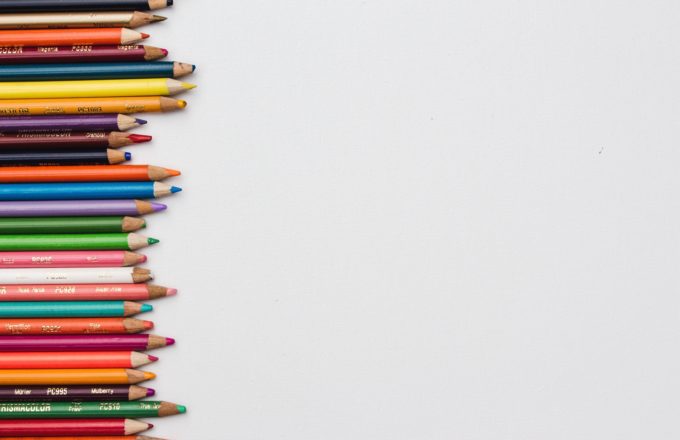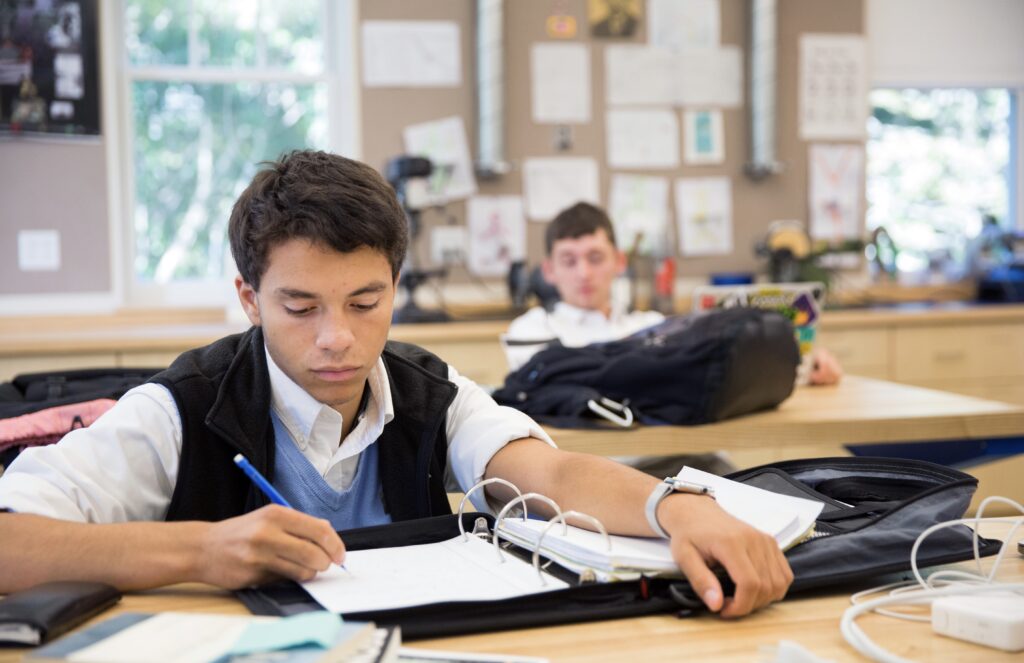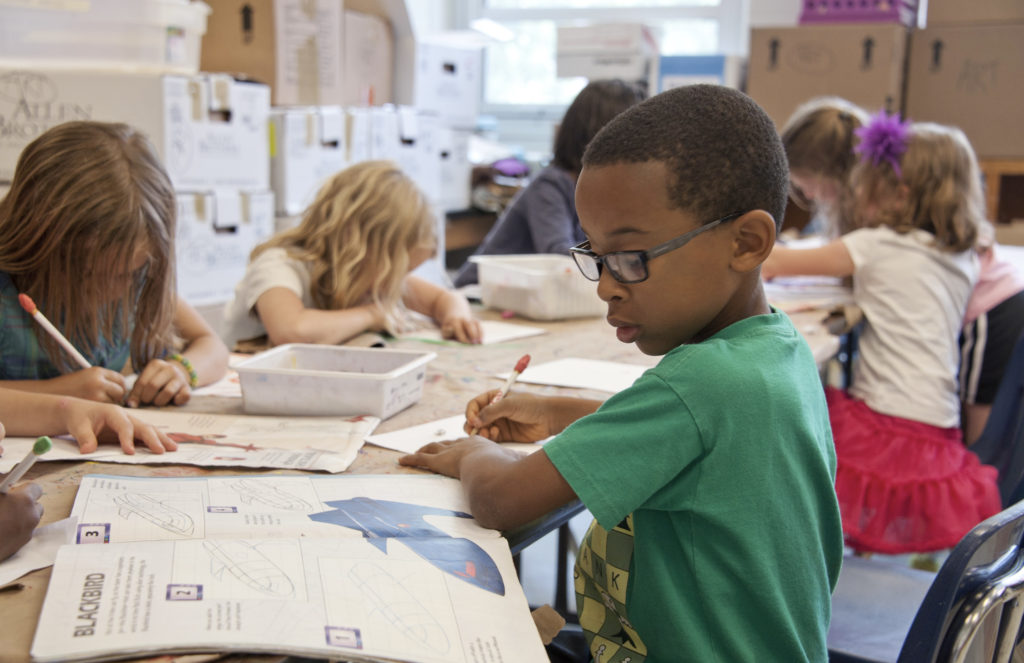This post is part of a series about helping students with LBLD experience academic success.
Read Lauren’s other blog posts:
My name is Lauren Guerriero, and I currently teach in a language-based, substantially separate, second-grade classroom in the Quincy Public Schools. I have been in this role for the past ten years. I currently have thirteen students who have been identified with specific learning disabilities, communication delays, or developmental delays.
During my first year as a language development teacher, I was fortunate to attend a Landmark Outreach Summer Institute course that focused on teaching students with language-based learning disabilities, and it changed the way I approached teaching students in my classroom. Over the years, my district has worked closely with Landmark Outreach to help develop and improve our program, and every time I complete a course, attend a PD session, or work with our consultant from Landmark, I walk away with new, research-based teaching strategies that I can implement in my classroom the very next day!
One Summer Institute course that I was able to attend was “Strategies for Teaching Study Skills,” taught by Deidre Mulligan and Meg Arnio. Throughout my posts, I hope to show how I have incorporated the strategies that I learned in this course into my daily instruction. The course helped to shift my thinking. I always knew organization, structures, routines, and visuals were important for our students, but I never truly realized the benefit of taking the time to slowly and explicitly teach each one. For example, when I break down and chunk our daily schedule into more manageable steps with a visual checklist written on the board, students can more easily engage and learn to become independent. Without this explicit teaching, students become heavily reliant on the teacher. I strive to incorporate these study skills in all aspects of my daily instruction. These skills are not only necessary to help our learners get through their school day in elementary, middle, and high school, but organizational skills are important life skills that our students need for everyday living. The result has been a positive impact on my students’ self-esteem, motivation, and academic performance.
BEE Binders with Agenda Books
We have all worked with students who struggle with organization of their materials, missed assignments, lost homework and unsigned permission slips. So here are some simple structures that I have put in place to help begin to teach our youngest students with LBLD the importance of managing their own materials.
I have implemented a binder system for all students to use throughout the year to help them with organization of their materials. My “Bring Everything Everyday Binder” or “B.E.E. Binder, ” helps students keep everything they need for class in a simple, organized way. It helps them to be responsible for their own homework and reading logs. This year, I have added an agenda book into the binder. This was a daunting decision for me because many of my students struggle with fine motor skills and I knew this would be a time-consuming task. At the beginning of the school year, I was writing everyone’s homework into their agenda books, and it would take a long time to get 13 students binders packed up. I felt frustrated because it took up so much time, but I kept reminding myself of what I learned in the study skills class and realized it was time well spent. Recently, I have noticed a big shift with my second-grade students. They are beginning to be more independent with this task, showing an understanding of the passage of a school week, and completing and handing in their assignments on time! I am now stepping back and just guiding them to make sure they have written everything down. They seem to feel empowered which helps them to feel successful.

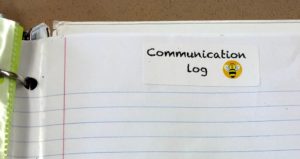 The “B.E.E. Binder” not only helps my students, but it also helps keep parents stay informed with daily notices and keeps an open communication log between parents and myself. Teaching organizational strategies by using the binder system has truly taught my students independence and responsibility, and it gives them daily success.
The “B.E.E. Binder” not only helps my students, but it also helps keep parents stay informed with daily notices and keeps an open communication log between parents and myself. Teaching organizational strategies by using the binder system has truly taught my students independence and responsibility, and it gives them daily success.
Schedule System & Folder system
Another small shift I have made to help enhance my students’ ability to organize their materials is the way in which I present my daily schedule. Not only do I post the daily schedule, but I’ve added a color-coded system to help students understand the sequence of our day and to help strengthen their ability to connect to the classroom environment and manage their own materials.
Just as this strategy was highlighted in the Study Skills class, I use a rainbow order, color-coded schedule and match each subject up with a corresponding folder. For example, math is taught first thing in the morning, so math is red. Every student has a red math folder in their desk to keep their work organized. I have taken it a step further and have my daily math stations organized in red bins.
All I really had to do was take the time to add colored stickers to my daily schedule cards and this has made a huge impact on our students. I am no longer answering questions all day about what folder things need to go in or where materials should be put away. If we are working on math and need to clean up it goes in the red folder, if we are working in our walk to read block it goes in the orange etc.
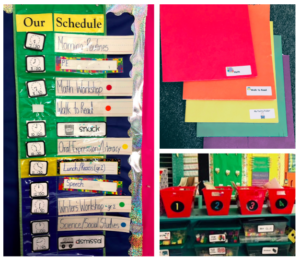 This is a strategy that I have taken on, as well as my teammate who teaches the third grade language development class. All of our students are more efficient with their time on task and ability to be independent with managing their own materials. By making this small change together we have noticed that our students are less reliant on us to take care of their materials and they are very proud to keep all of their folders in good working order.
This is a strategy that I have taken on, as well as my teammate who teaches the third grade language development class. All of our students are more efficient with their time on task and ability to be independent with managing their own materials. By making this small change together we have noticed that our students are less reliant on us to take care of their materials and they are very proud to keep all of their folders in good working order.
Providing explicit structure of the way in which I organize our classroom materials has made a positive impact on my everyday instruction. I have begun to teach our youngest elementary students that these skills are important, and it has greatly increased student independence and has boosted their self-confidence.
